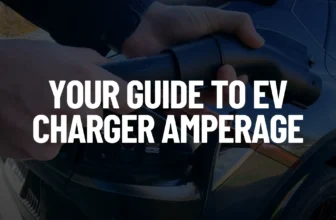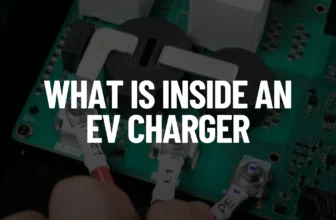In this guide, we will delve into the factors contributing to electric vehicle (EV) battery fires, emphasizing best practices and safety protocols for preventing and managing such incidents. Our focus will primarily center on Lithium-ion batteries, widely adopted as energy storage solutions in EVs despite their inherent fire risks.
According to the National Transportation Safety Board (NTSB), Lithium-ion batteries pose significant fire risks, evidenced by reported incidents of electric vehicle battery fires. These incidents prompt critical considerations regarding the effective protocols for emergency responders to manage such emergencies.
Table of Contents
What Causes Electric Vehicle Battery Fires?
Common causes of electric vehicle battery fires include mechanical abuse, electrical abuse, and thermal abuse. These abuses can induce internal short circuits within battery cells, triggering rapid heat generation and the release of gases, potentially leading to explosions.
Mechanical Abuse of Electric Vehicle Battery
Mechanical abuse causes physical impacts or stresses on the electric vehicle battery pack, such as during accidents or improper handling during installation or maintenance. These impacts can damage the battery cells or their protective casings, compromising their integrity and safety.
Electrical Abuse of Electric Vehicle Battery
Electrical abuse due to electrical vehicle branch short circuits (external short circuits), charging, and discharging practices can adversely affect electric vehicle batteries. This includes scenarios such as overcharging, where the battery is subjected to a higher voltage than recommended and discharging beyond safe limits. These practices can lead to accelerated degradation of battery cells, increased heat generation, and potential safety hazards.
Thermal Abuse of Electric Vehicle Battery
Thermal abuse in electric vehicle batteries results from excessive heating, often due to high temperatures, prolonged heavy loads, or inadequate cooling systems. This can accelerate battery degradation, increase the risk of internal short circuits, and potentially lead to hazardous conditions such as thermal runaway or fires.
Understanding Lithium-ion Battery Fire Risks
To grasp why Lithium-ion battery fires are frequent, it’s crucial to explore the components of an electric vehicle’s Lithium-ion battery cells and how these cells are packed to form an EV battery pack.
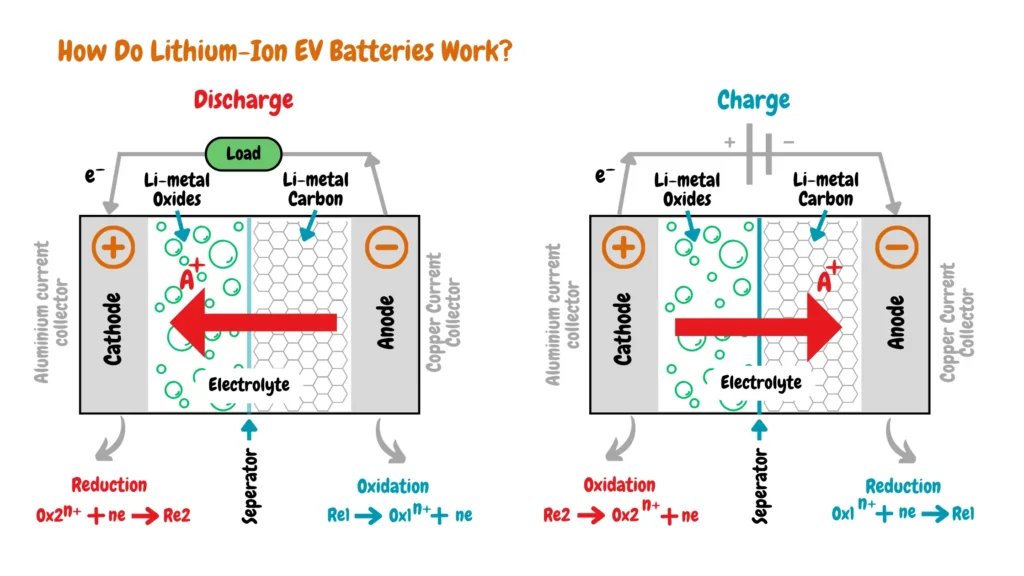
As you can see from the operation of Lithium-ion battery cells above, the working of Lithium-ion battery cells involves a graphite anode—a highly flammable solid material—and organic electrolytes, which are flammable liquids. These cells also produce combustible gases such as CO2, CO, H2, CH4, C2H4, and C2H6, along with carbonates and fluorinated compounds like HF and CH3F. Additionally, small quantities of combustible lithium metals are present in the composition.
Mechanical, electrical, or thermal abuse of a single Lithium-ion battery cell initiates rapid heat generation and the release of combustible gases, leading to potential explosion due to pressure build-up. This event can trigger a chain reaction, resulting in a thermal runaway that affects adjacent Lithium-ion battery cells.
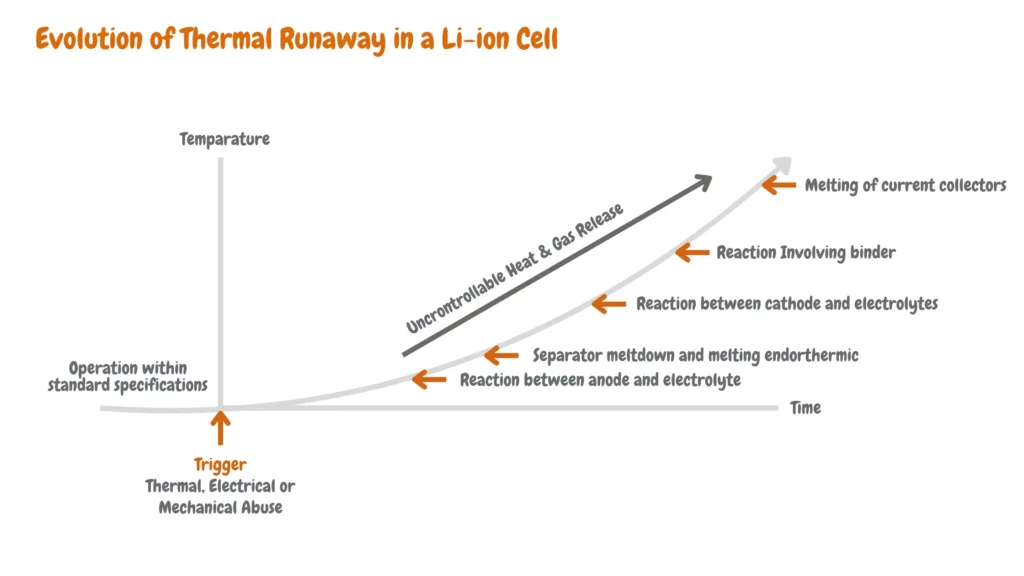
Thermal runaway is characterized by rapid escalation and can propagate into a chain reaction affecting adjacent Lithium-ion battery cells, potentially leading the entire battery system to ignite—a phenomenon known as thermal propagation, illustrated in the image below:
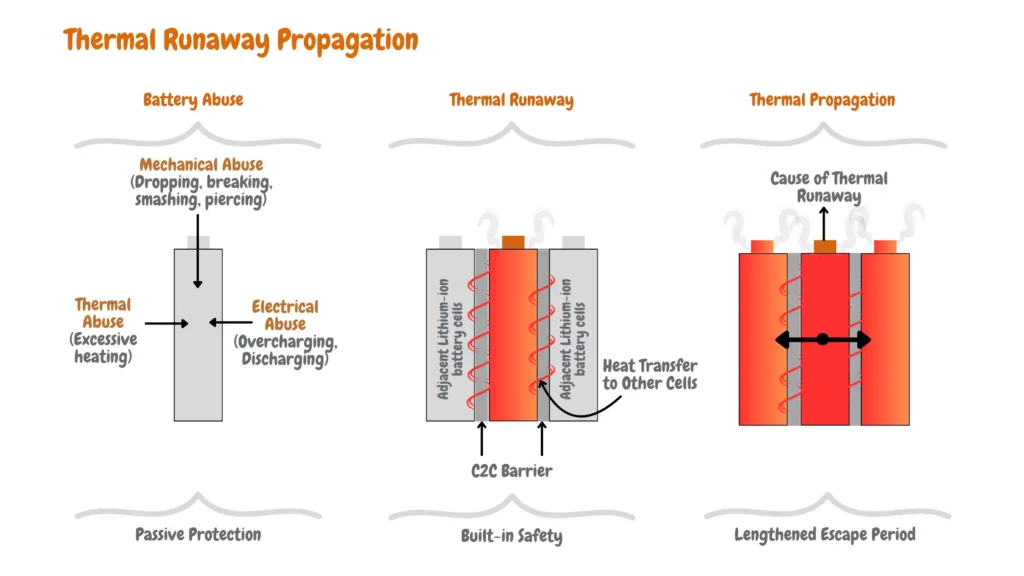
Cascading exothermic decomposition becomes inevitable upon the initial cell experiencing thermal runaway. This runaway event triggers the pyrolysis of electrode materials, releasing significant quantities of flammable electrolytes and oxygen. The resulting conflagration exhibits characteristics of a lithium-ion battery fire, posing a significant challenge due to the multi-mechanism combustion and the presence of reactive lithium metal.
What to Do in Case of Electric Vehicle Battery Fires
In the event of a suspected lithium-ion thermal runaway incident involving an electric vehicle (EV), prioritize immediate occupant evacuation. Ensure all individuals leave the area quickly and establish a safe perimeter at a distance recommended by NFPA guidelines for first responders dealing with EV fires. This reduces exposure to potentially harmful electrolyte byproducts and minimizes the risk of projectile debris from potential battery venting.
Simultaneously, call emergency services immediately. Report a suspected lithium-ion battery thermal runaway involving an EV. Provide crucial details such as exact location, EV make and model, vehicle color, visible damage (deformation, smoke, flames), and battery type (e.g., Lithium Nickel Manganese Cobalt Oxide – NMC), if known. This information enhances first responders’ situational awareness and helps them develop an effective response strategy for the specific EV battery situation.
Only if it is safe and you are trained in proper electric vehicle fire extinguisher use: attempt to contain and extinguish secondary fires (fires in nearby objects caused by the EV fire) with a suitable fire extinguisher specifically designed for lithium-ion battery fires. Maintain a safe distance from the electric vehicle itself throughout.
To reduce the risk of such incidents, always adhere to the manufacturer’s guidelines for handling, charging, and discharging lithium-ion batteries in your electric vehicle (EV). These guidelines offer tailored recommendations based on your EV model, battery type, and associated risks. Following these guidelines helps maintain the safe and efficient operation of your EV battery.
Conclusions.
In conclusion, understanding the causes of electric vehicle battery fires is crucial for both EV owners and emergency responders. Mechanical, electrical, and thermal abuses can all contribute to these incidents, highlighting the importance of proper handling and maintenance practices. Lithium-ion batteries, while efficient energy storage solutions carry inherent risks that necessitate adherence to manufacturer guidelines for safe operation.
Should a battery fire occur, swift evacuation and establishment of a safe perimeter are paramount. By following established protocols and promptly alerting emergency services with specific details, such as EV make, model, and battery type, responders can better mitigate risks and manage the situation effectively.
Ultimately, proactive measures in handling and awareness of potential risks associated with EV batteries can significantly enhance safety and ensure the continued advancement of electric vehicle technology.

James Ndungu is a certified EV charger installer with over five years of experience in EVSE selection, permitting, and installation. He holds advanced credentials, including certification from the Electric Vehicle Infrastructure Training Program (EVITP) and specialized training in EV charging equipment and installation, as well as diplomas in EV Technology and Engineering Fundamentals of EVs. Since 2021, James has tested dozens of EV chargers and accessories, sharing expert insights into the latest EV charging technologies.



